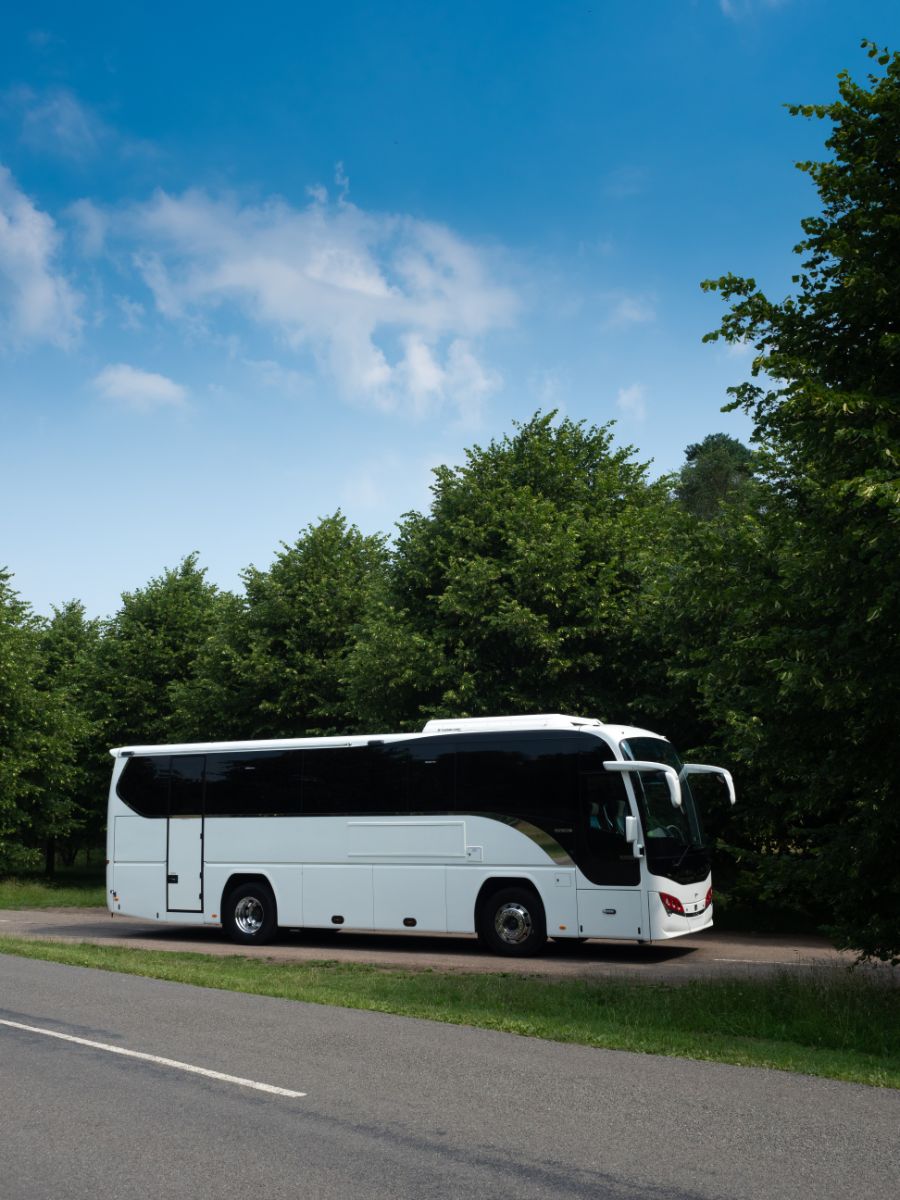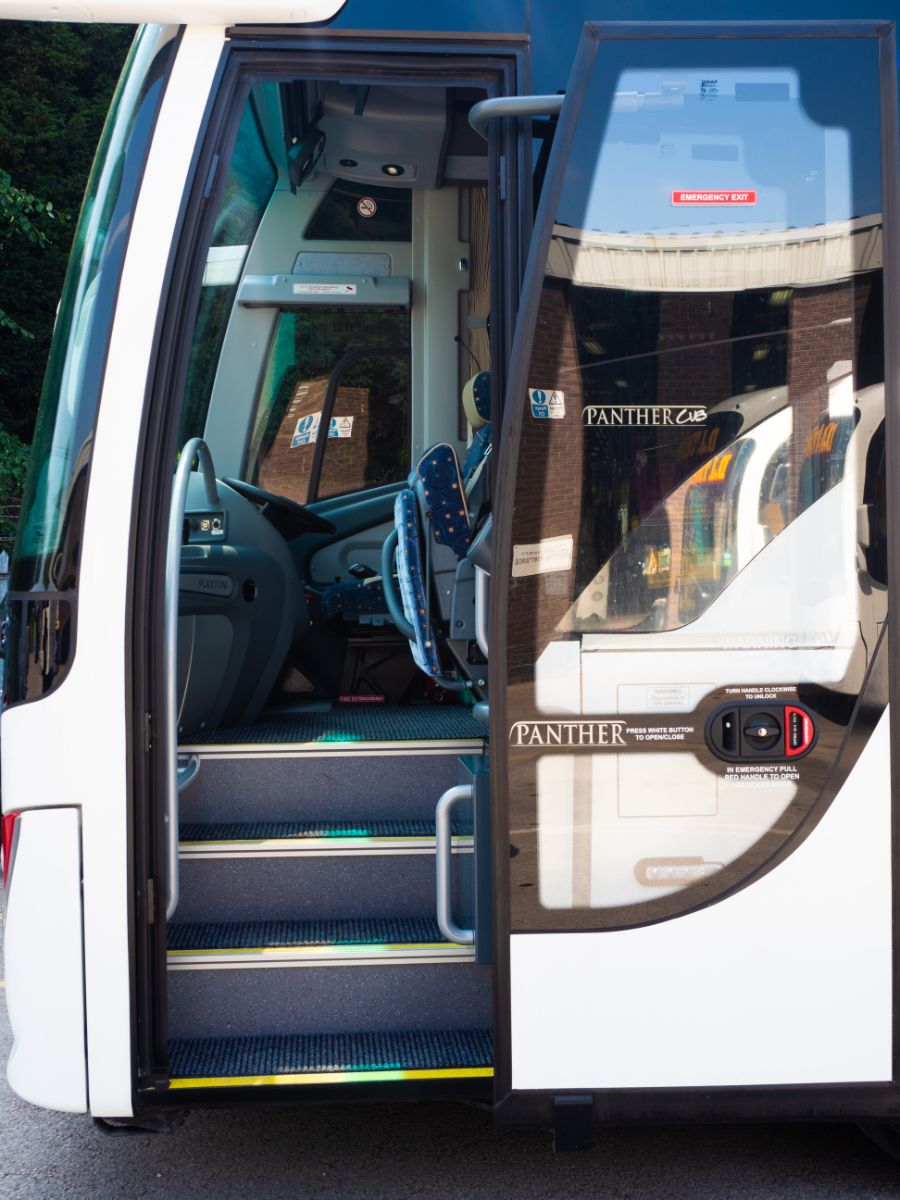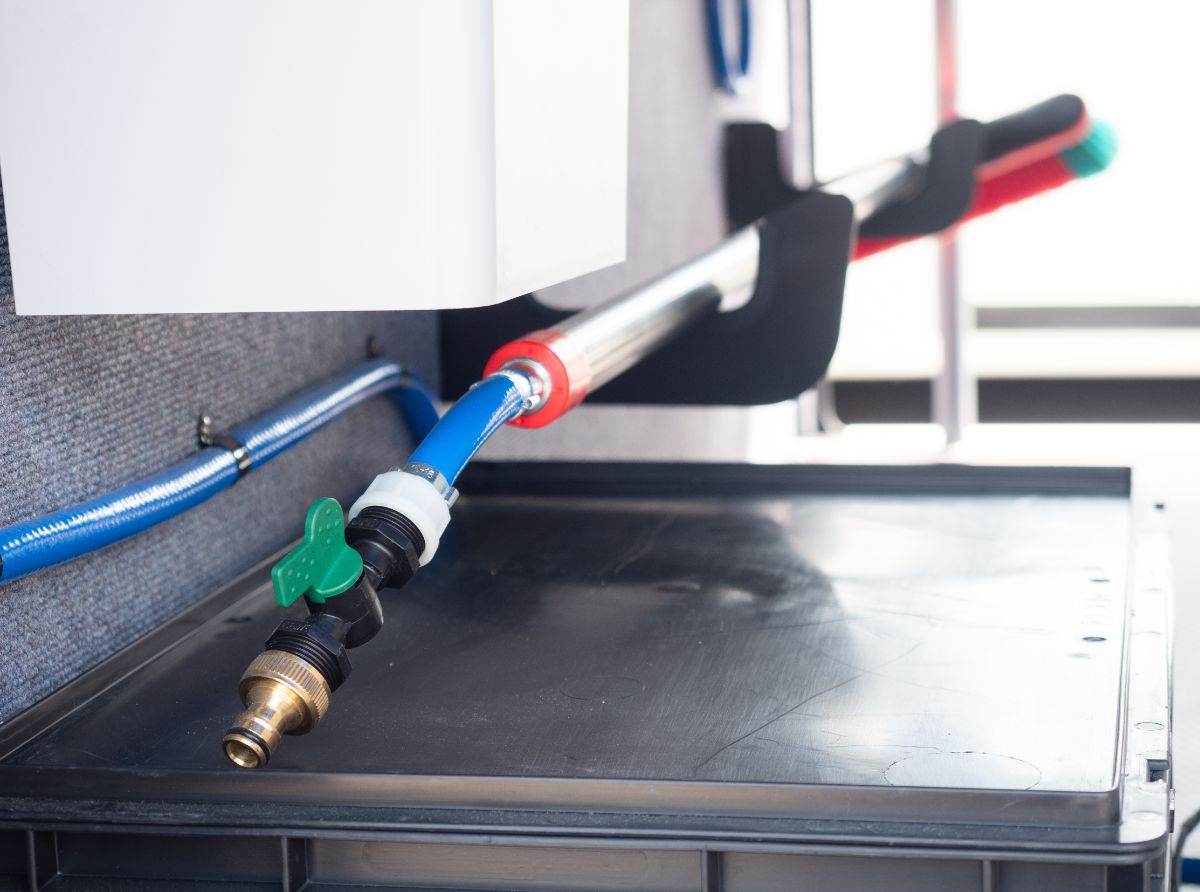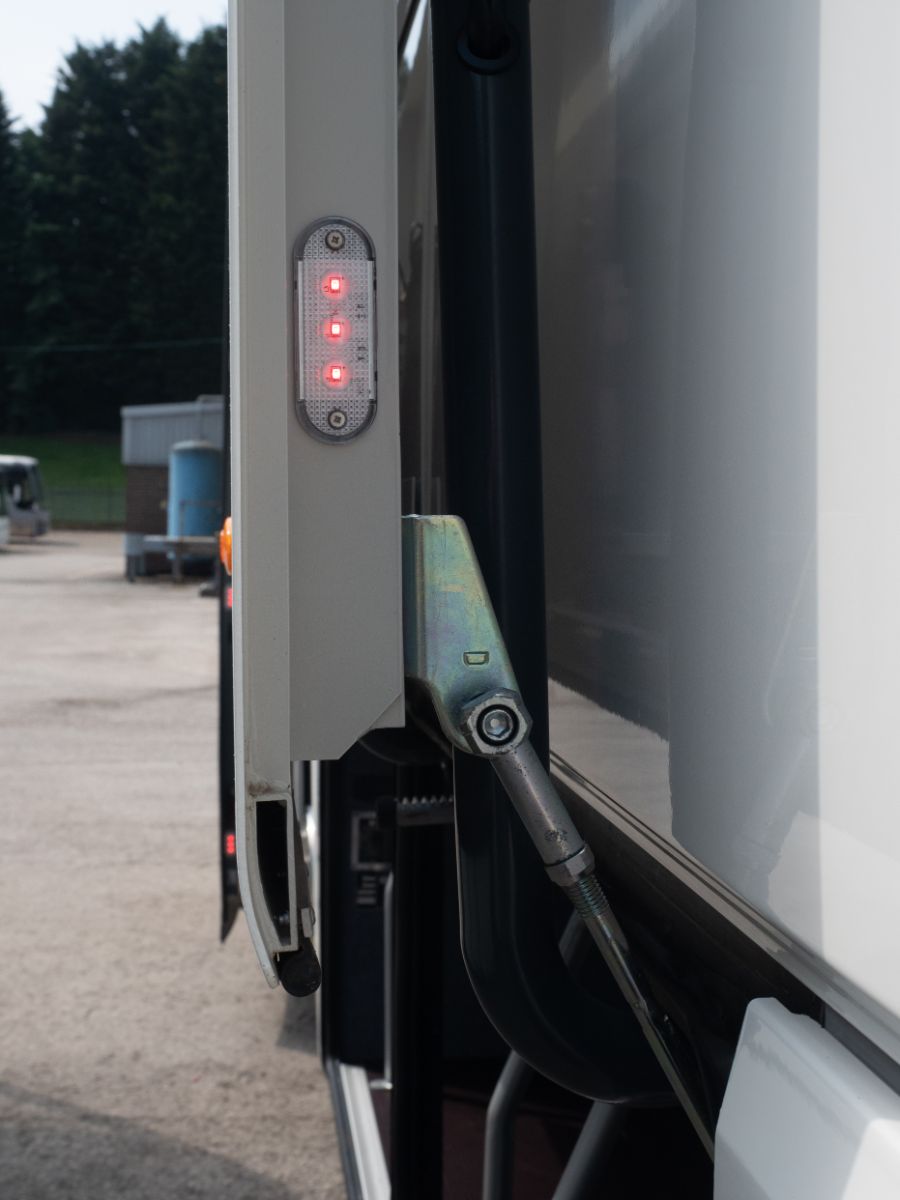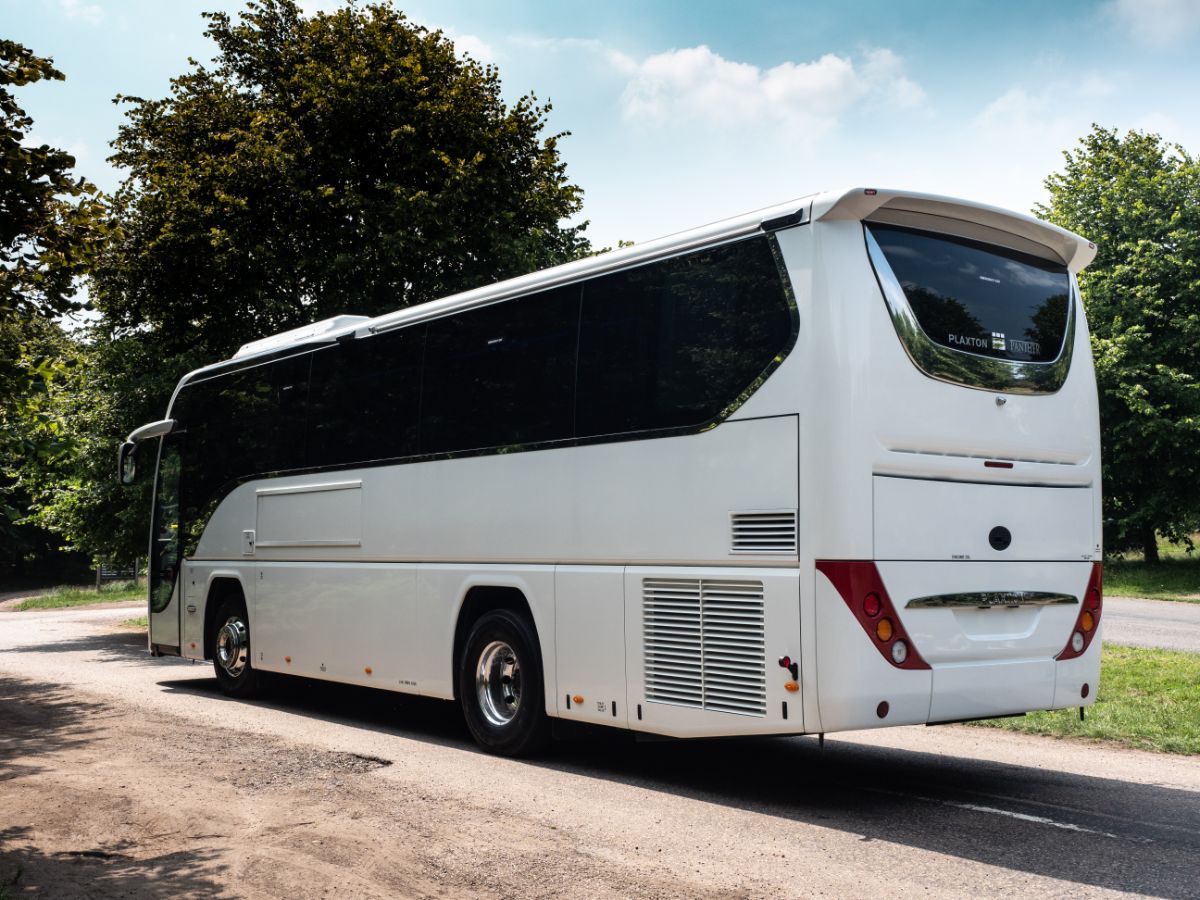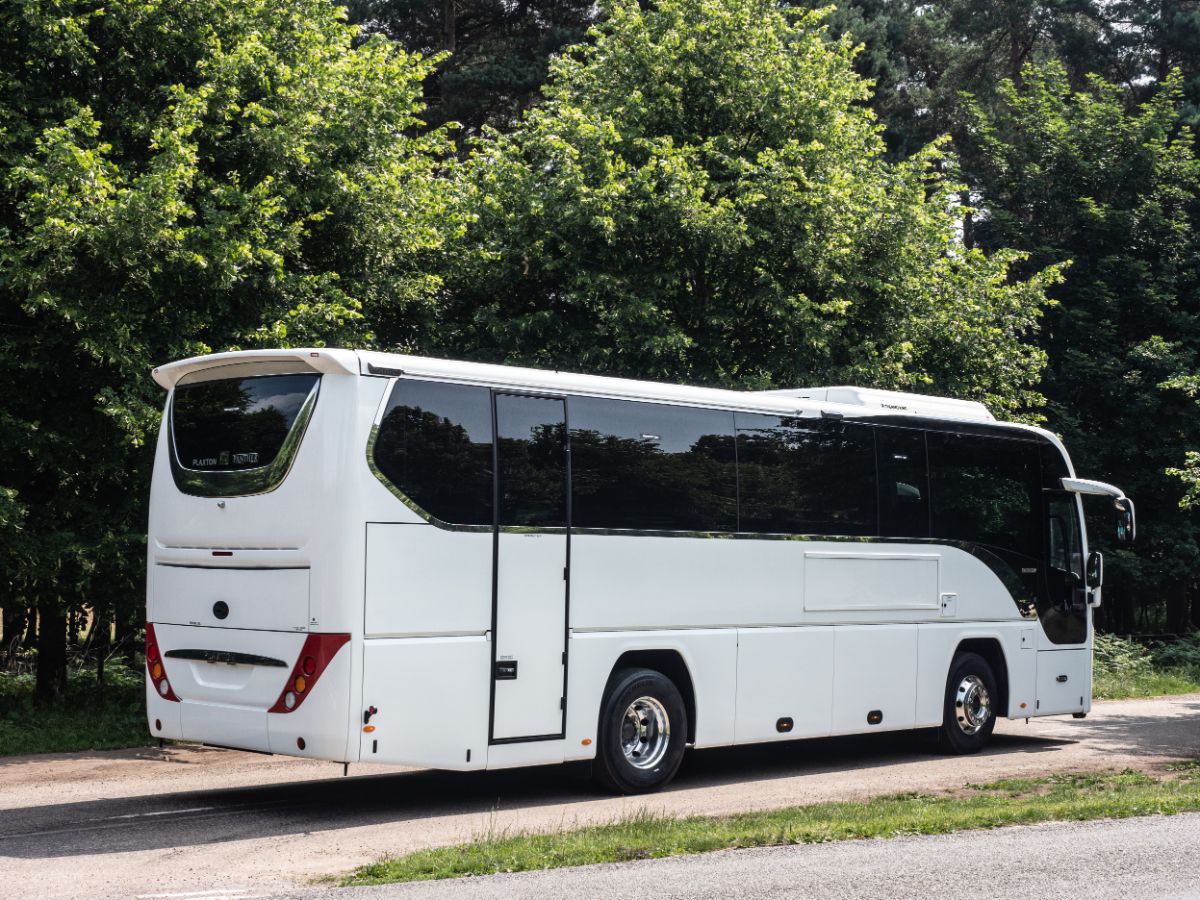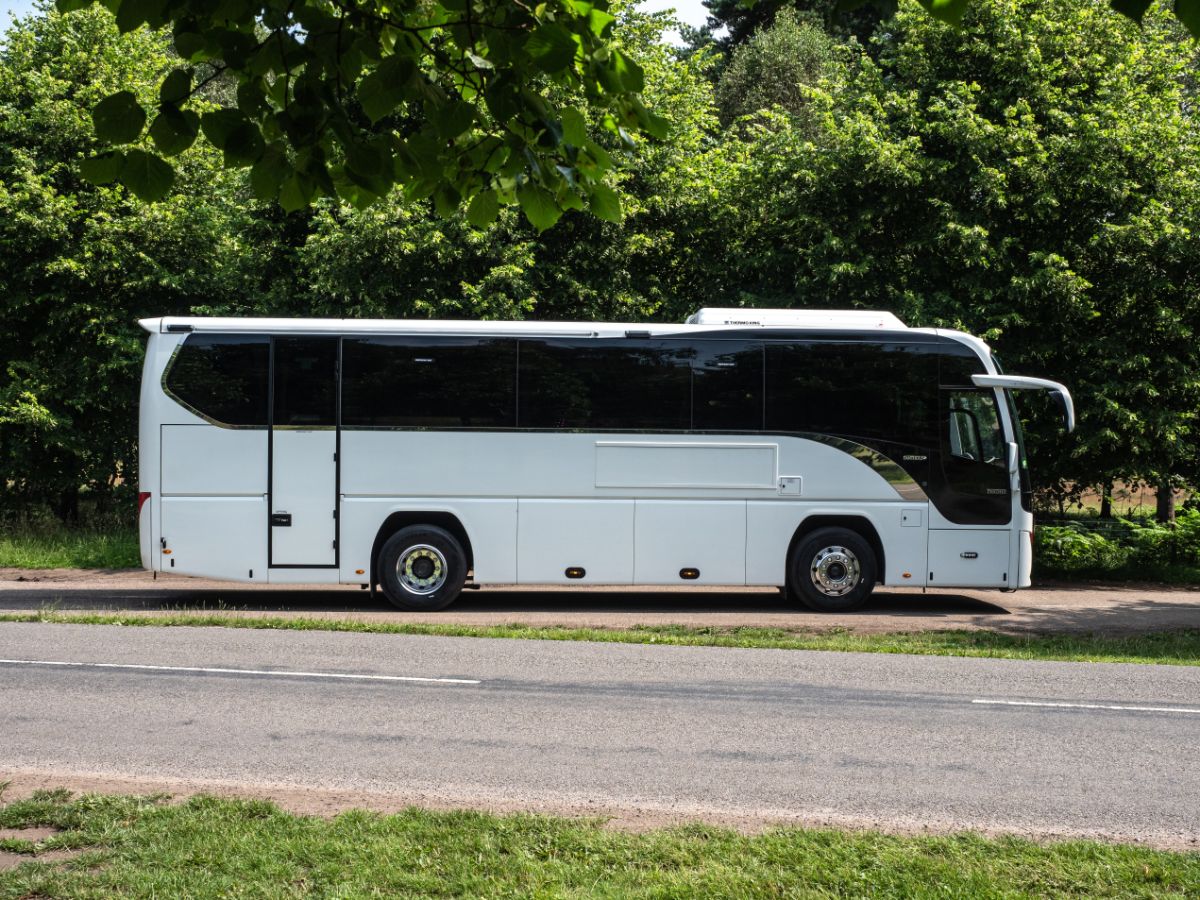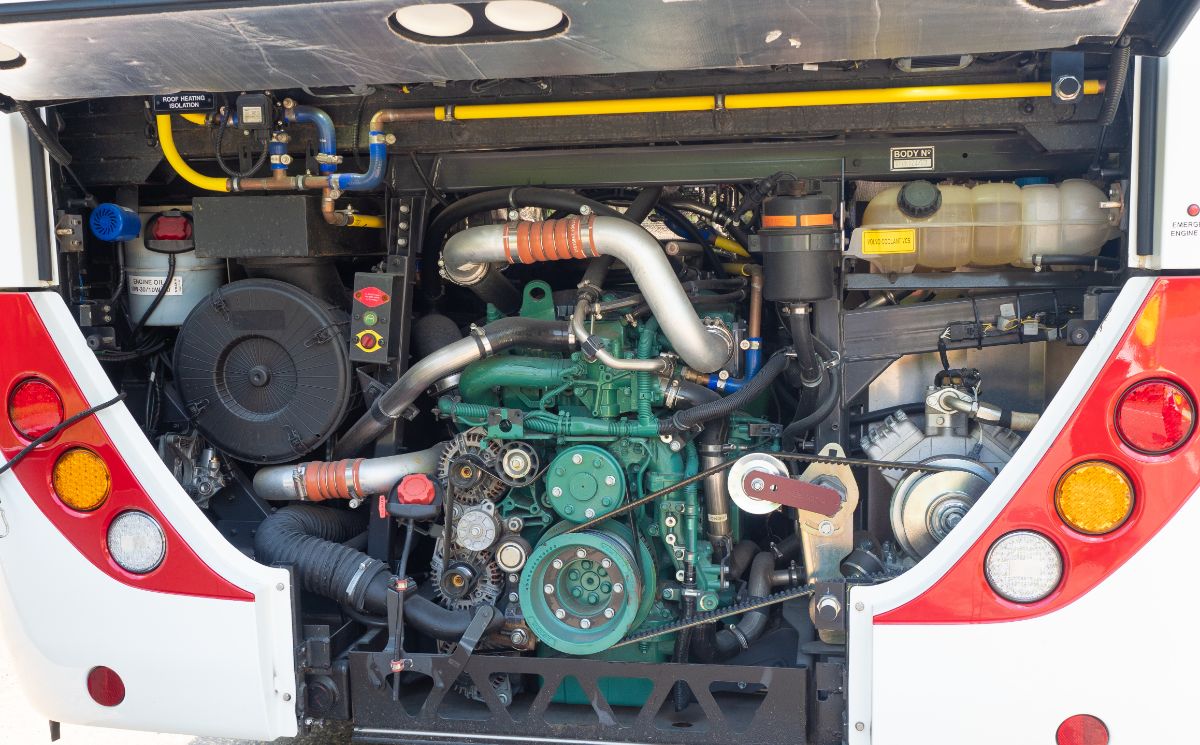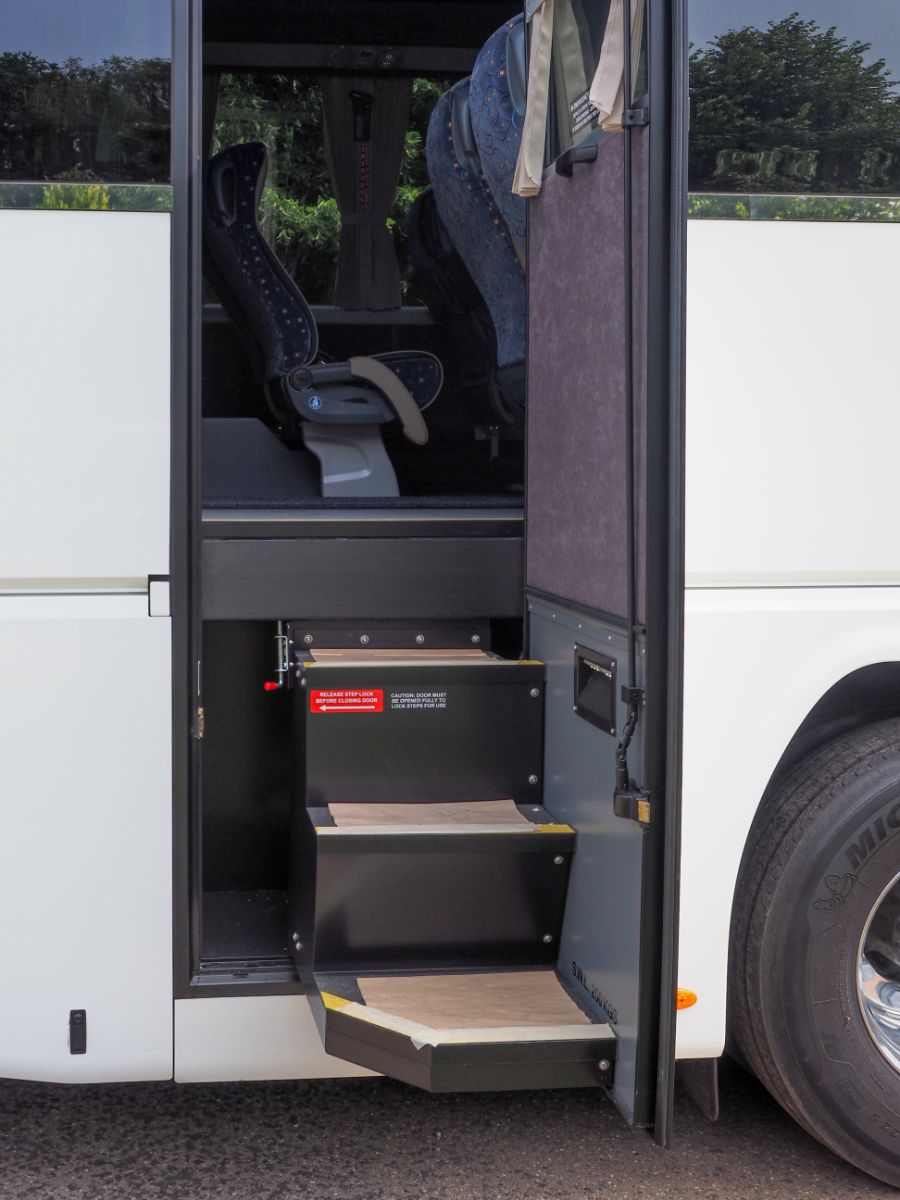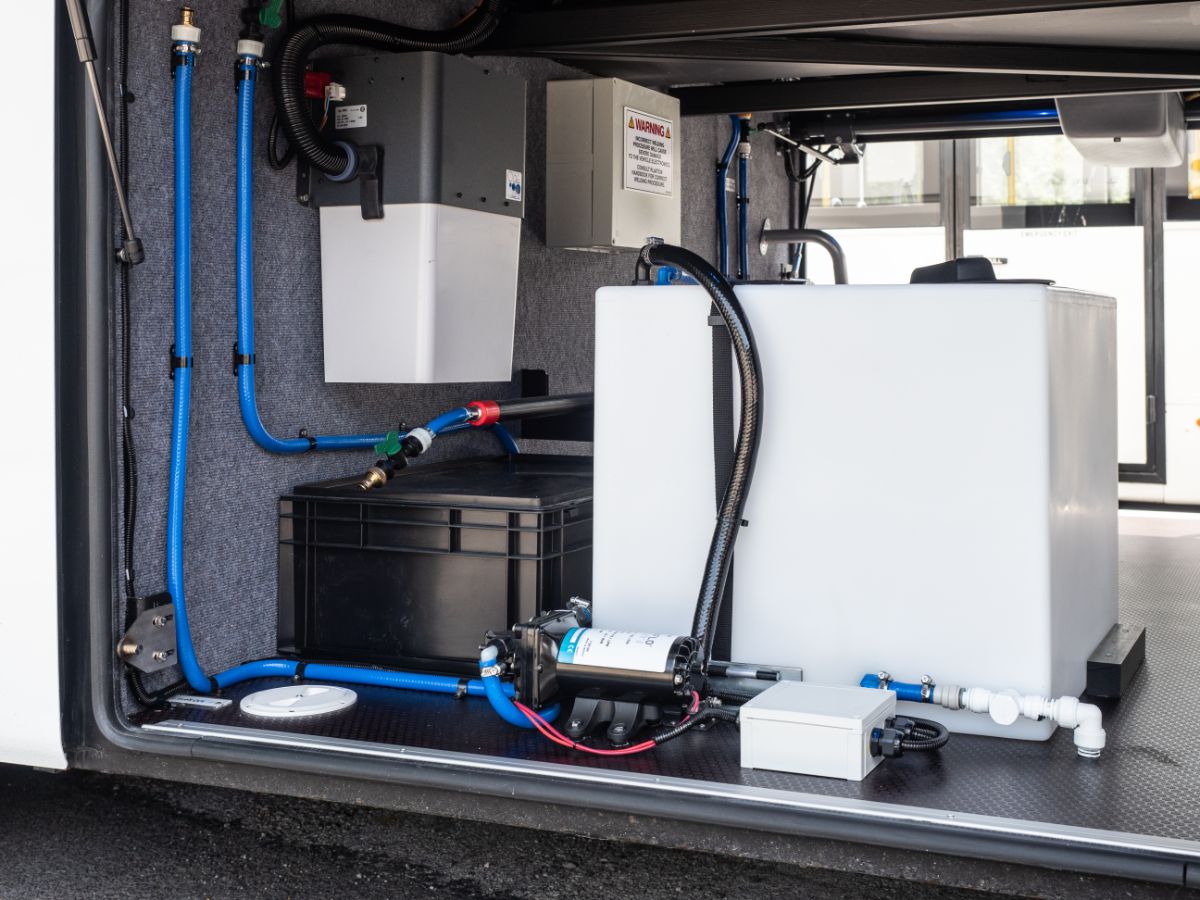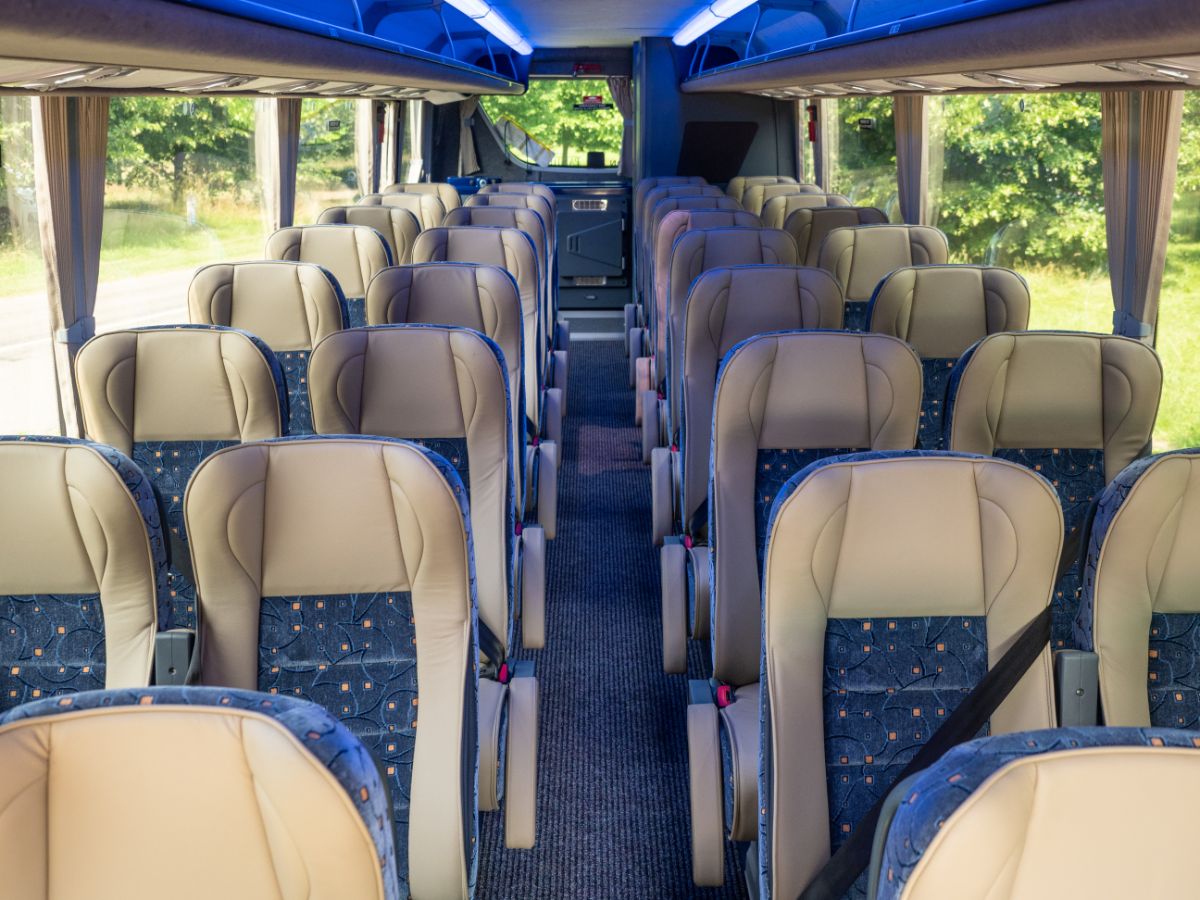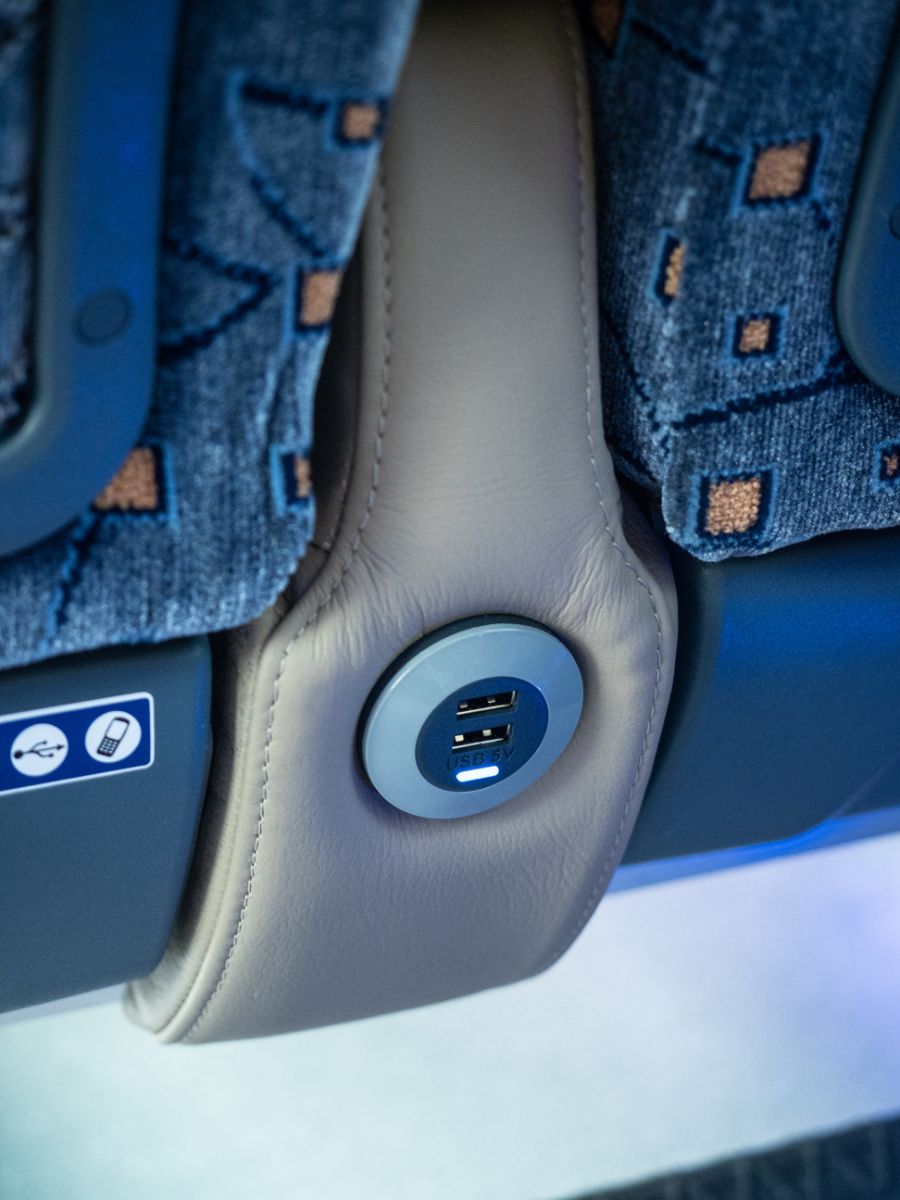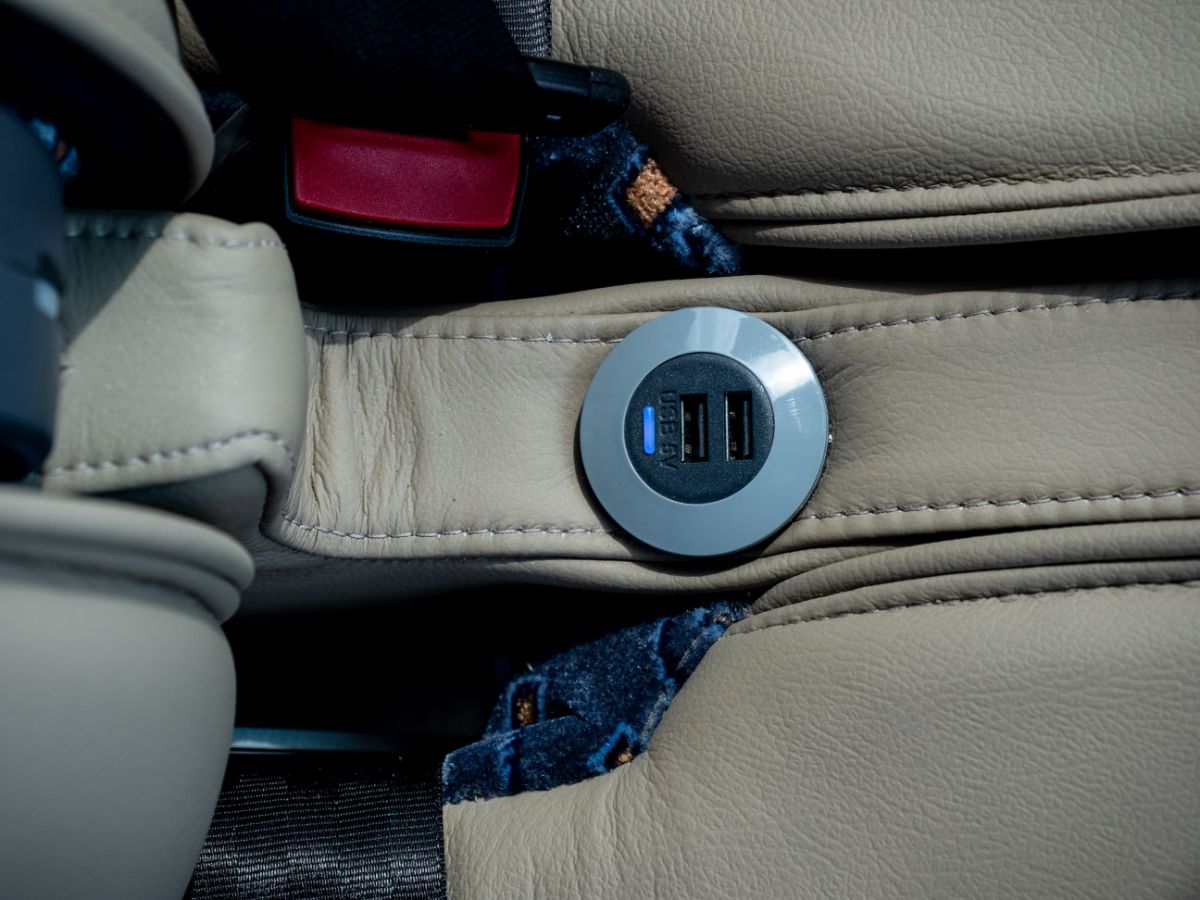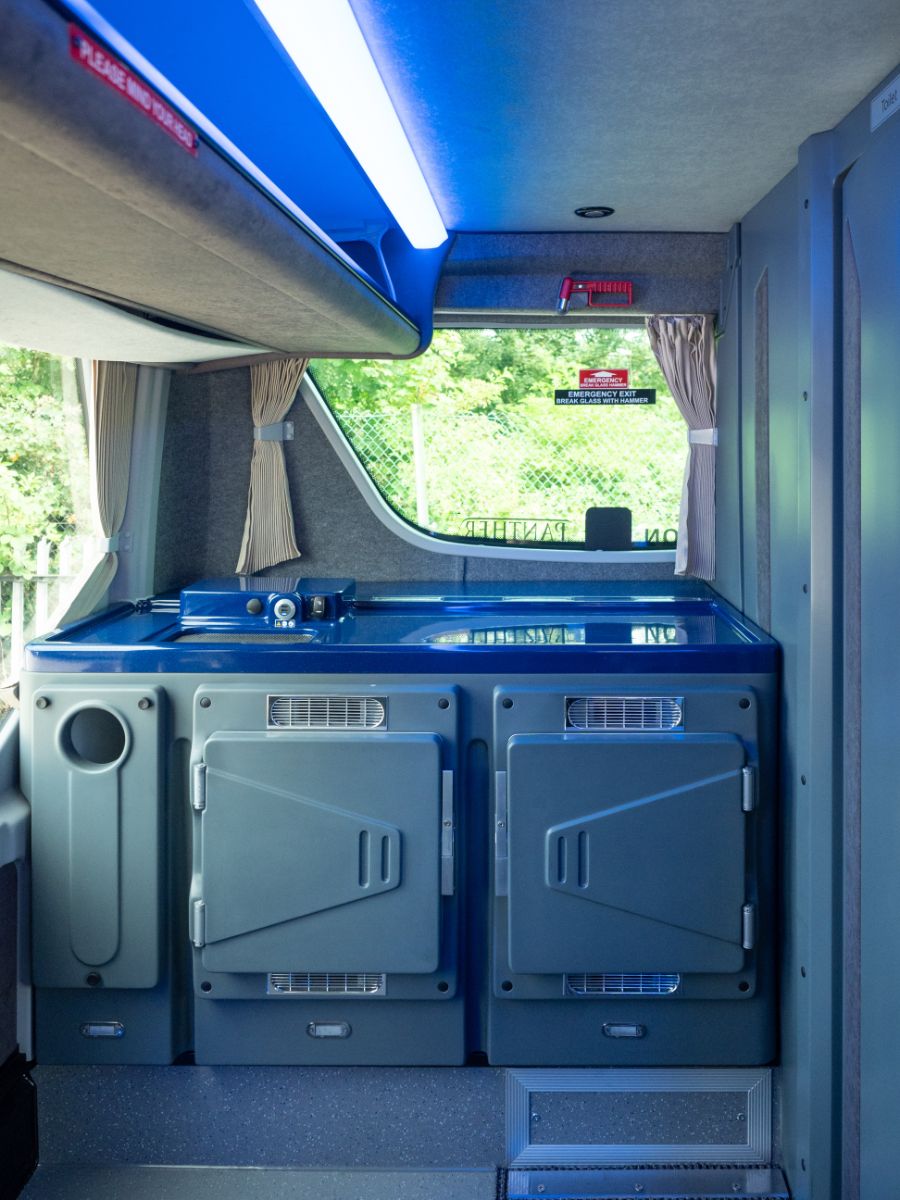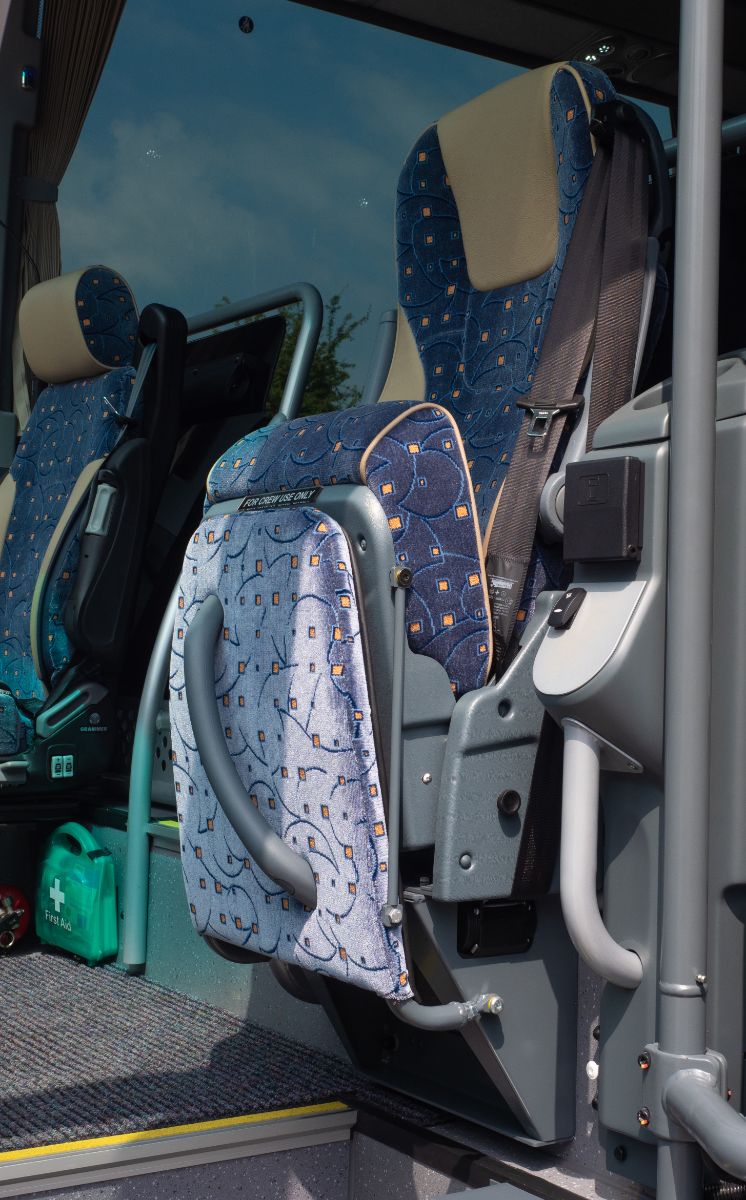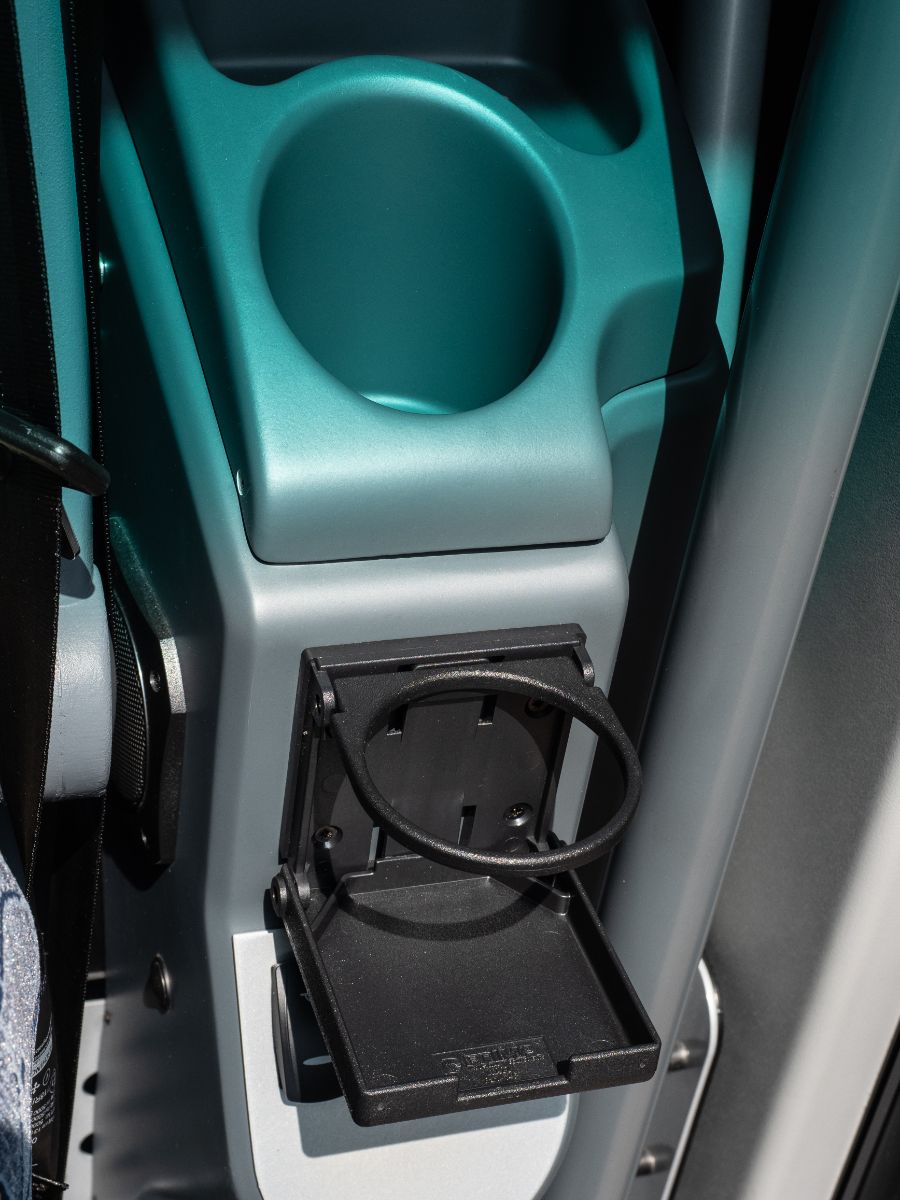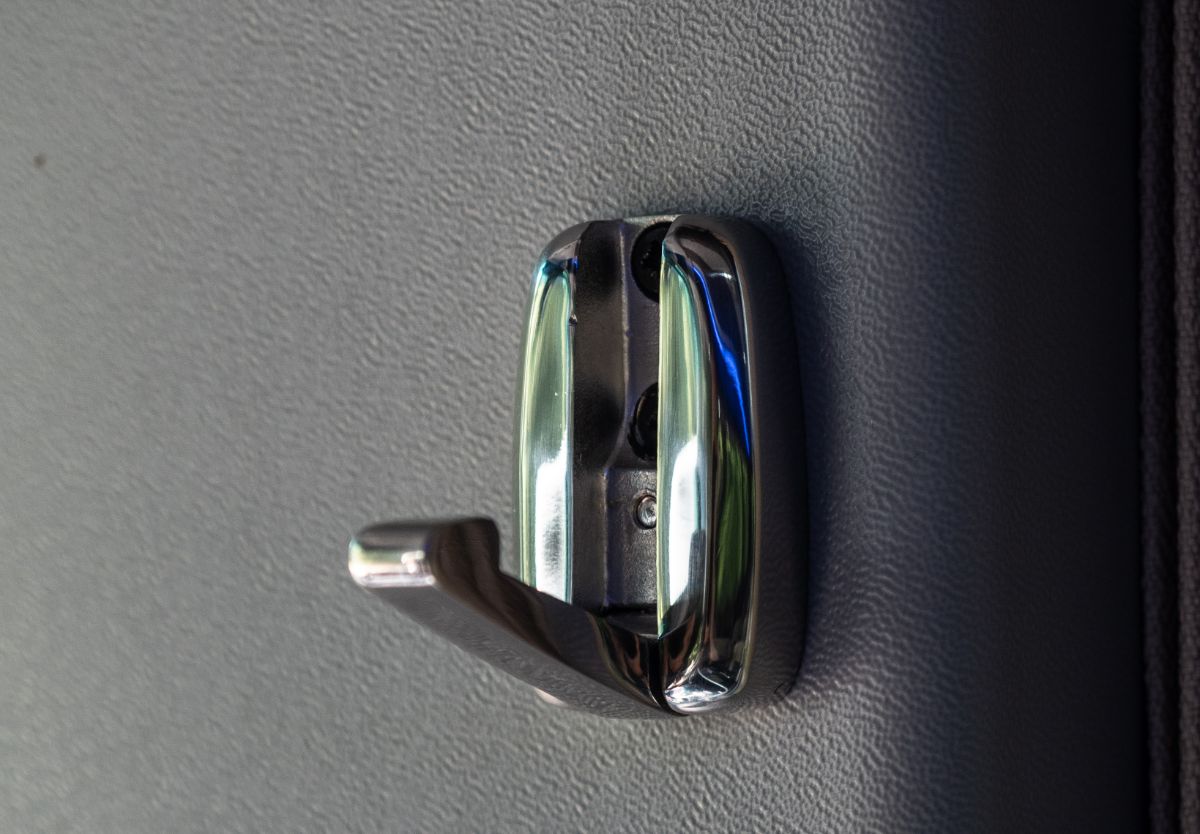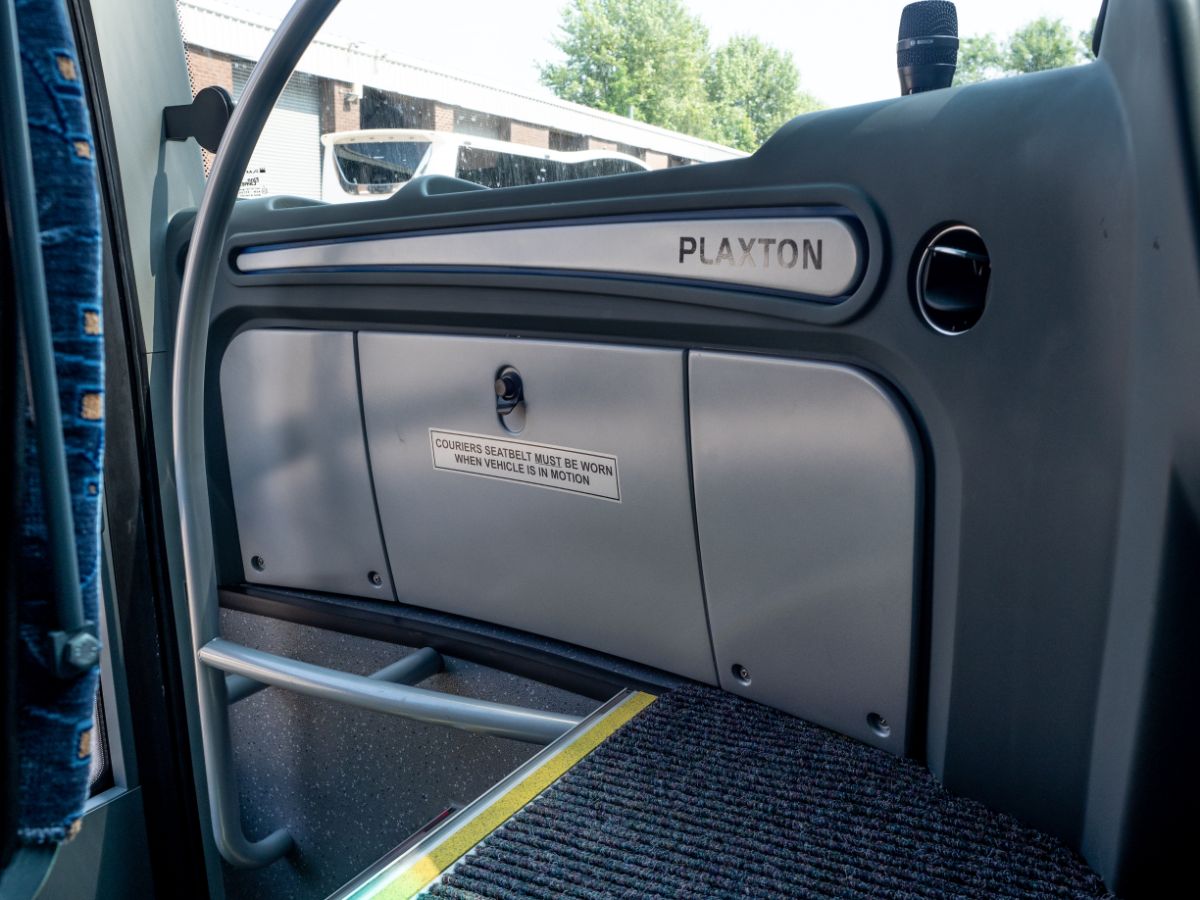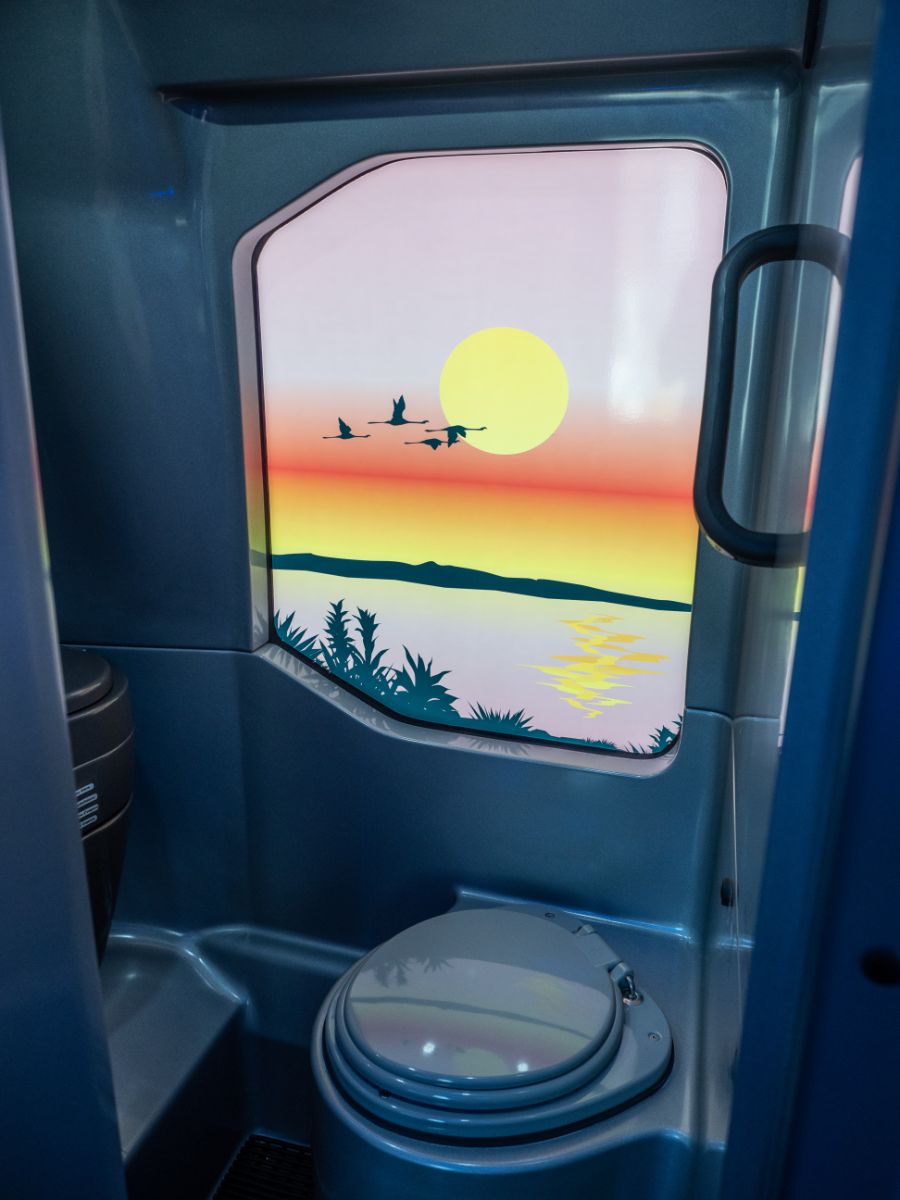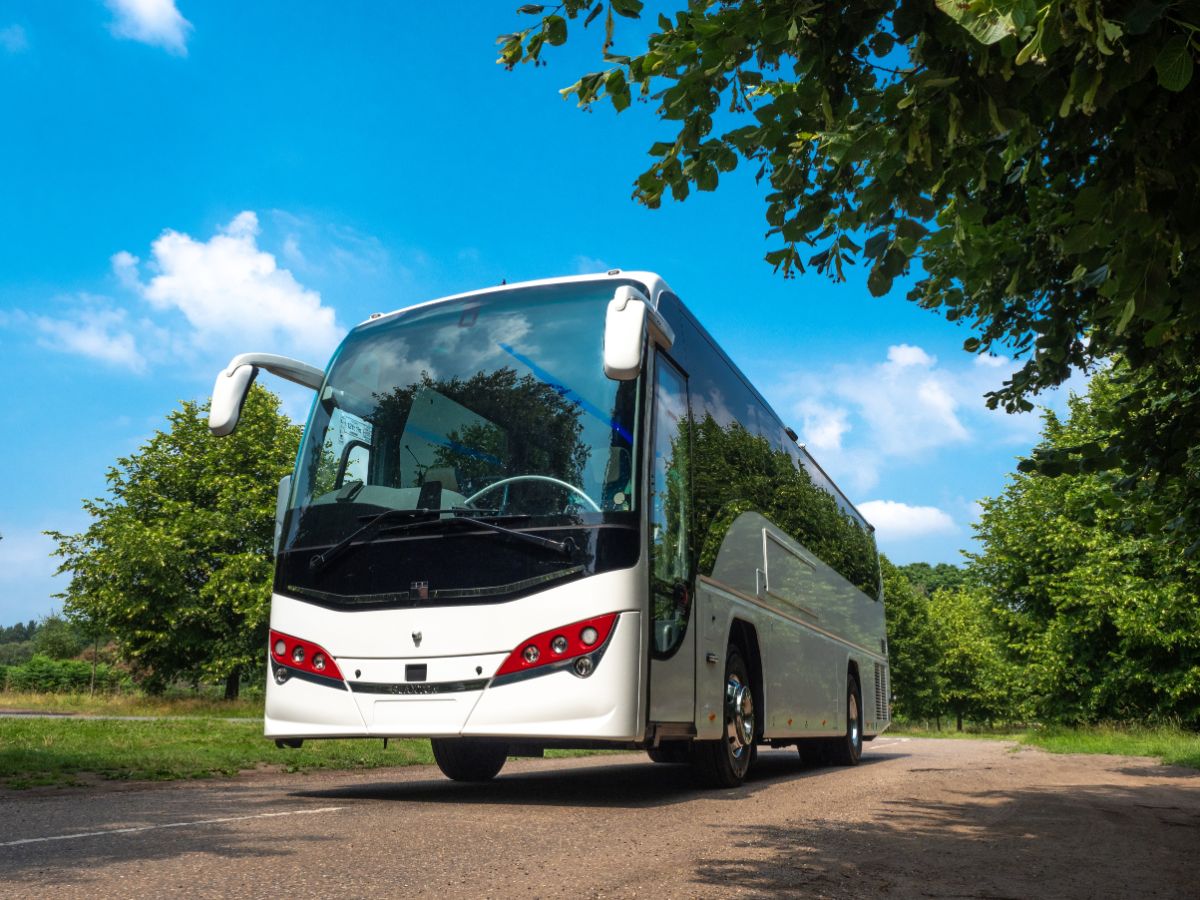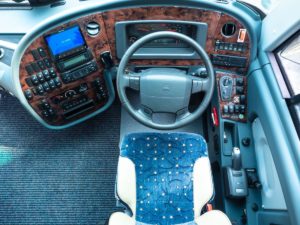Little big cat
A Panther Cub which is one of a litter gets a work-out with Bus and Coach Buyer. Yes, many will flag up that it has only 34 seats, but the test driver and the editor think operators might be missing the point…
If you are someone who buys with heart as well as head, Plaxton’s Panther Cub could make a compelling case for adding a new midicoach to your fleet.
The midicoach sector is occupied by a huge variety of vehicle types – from front-engined 7.5t truck-based coachbuilts to ‘slimline’ rear-engined coaches which reduce the proportions of a full-sized vehicle, rather than just removing a section from the bodywork of a full-sized coach. The Panther Cub is in the latter category.
There’s a place for all three, and which you pick will depend on the work you have available and the number of seats you want. The truck-based coaches tend to top out at about 33 seats. Coaches like Temsa’s MD9 and Yutong’s TC9 get another row of seats, at an absolute maximum of around 39 seats. In the Panther Cub – like other ‘shortened’ full-sized coaches – you can squeeze in another row and get to as many as 45.
The 10.8-metre Panther Cub is, of course, a metre longer than most but it’s also something else; it’s very much a tourer in every possible way; spacious and grand. By virtue of its extra height and width, it’s got some stage presence, and if you have a Volvo fleet, the B8R chassis will add to its appeal.
The Panther Cub we’re road testing is right at the top end of specification, and equipped with a raft of smart features including a rear servery and floor-mounted toilet. For this reason, it has 34 seats but in a more standard trim could have 45 – possibly 47 with a low seat pitch. However, we discovered that extra seats aren’t everything…
Exterior
The Plaxton Panther Cub is a very attractive coach, sharing this with its ‘mum’ the Panther.
Starting at the front, the coach has a very well designed plug entrance door with 3/4-depth glazing which gives the driver a good view of kerb distance and passengers. The fuel filler cap resides further along the nearside along with the AdBlue filler.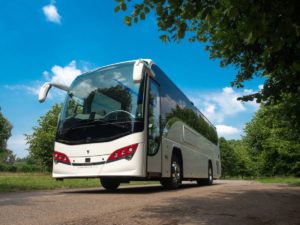
The nearside lockers on this example are powered, and open to reveal a fairly unencumbered luggage bay. This example, though, has a powered wash fitted together with wash tank and hose brush, all of which take up space. Without the wash tank, there appears to be enough space for a tour group’s luggage though some sports groups might struggle, says the Coach Stig.
There’s an underfloor vacuum cleaner and, further to the rear, the next locker houses the Webasto unit, with the toilet dump and the exhaust. Further back, there are the louvres for the cooling pack.
In terms of style, the coach’s side is fairly plain, the only deviation from flat, composite panels (mounted on a stainless steel superstructure) are the bevels on the top edge of the locker doors and waist panels and a very nice chrome trim which follows the very attractive upwards sweep of the window line from the lower edge of the door glazing. On this example, a signage holder has also been fitted.
The rear of the coach is very attractive, with lots of sculpting and imaginative use of the engine bay door shut gaps. The top section is on gas struts and enables access to engine oil and coolant expansion tanks. To get to the lower part of the engine, the lower panel, which runs around the edge of the light cluster, has a clip and retaining straps both sides, but lifts out of the aperture complete.
Above the engine bay doors, there’s the reversing camera and then the rear screen, which sits atop another lovely chrome-effect trim. The roof line extends over the rear glass, perhaps to provide some reduction in rain streaking, maybe for aerodynamics, but possibly because it looks good.
The offside of the coach has the rear emergency door, which in this example is accessed from the area next to the servery. It’s a nicely-accomplished exit with a full set of steps which emerge when the door opens, and a puddle light over the exit for safety. The manually-operated locker doors are forward of this and we again have AdBlue and fuel filler covers. All wheels are Alcoa Durabright alloys. Tyres are Michelins.
Eagle-eyed readers will have spotted the ‘tube’ lights which are sited along the roofline, together with other marker lights. These were specified by the company which originally ordered this example, and far from standard equipment. However, the locker doors also have LED lights set into their edges, on view only when they are open. We thought these a very useful detail, preventing bumped heads in the dead of night and other near-misses.
The front of the coach is, er, understated. That’s not a criticism, but though there’s some nice styling around the headlamp clusters, the rest including the mirrors is staid but very functional. The screen reaches deep below the dashboard edge and to a chrome Plaxton ‘castle’ trim. But that brings us full circle to the entrance door, and that’s where the fun really starts.
Interior
The passenger door is amply wide and the steps evenly spaced and of reasonable height – nothing there at all to challenge any passenger.
But the thing that strikes you straight away is the courier seat, which is unlike any other we have tested. Like all the seats, it’s Brusa product and has a built-in footrest for the driver. The fold-down seat squab and the footplate are linked so that when the seat folds down, the footrest comes down with it.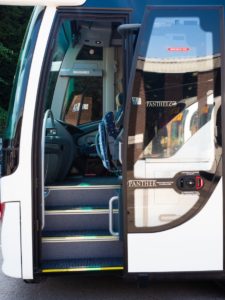
The courier is really treated as a VIP on this example of the coach, with two cupholders and on the dash opposite, USB and microphone sockets. This coach is built with a courier in mind. But it comes at a cost, because the folded seat has quite a depth to it which eats into the stairway space. Not so much that 90% of customers would notice but it’s a big seat.
Further in, the dash arrangement stands out. New mouldings to the left sweep around a backlit inset carrying the Plaxton name and around towards the dash. The dashboard itself is very smart, in mock burr walnut and with a curvature around the driver to keep everything within reach. It’s then that you notice the short distance between the dashboard and the windscreen. The Stig very much liked this, and we’ll explain why.
At floor height, the Brusa 300 HRS seats are very impressive. They’re big seats with a high headrest, and they have auto-recline (they return to upright automatically, actually). In this example, the side bolsters are in cream hide leather and the centres in EroSpradling moquette. There are solid footrests which should resist any damage. Each has a small fold-down table with slot for a smartphone. Note to Brusa: most people have gel cases on their phone, which means they won’t fit this narrow slot.
The ideal position of USB sockets is the back of the seats, and that’s where they are. While I understand the argument that, here, they get vandalised, positioning them under the seats makes them all but unusable. The front pairs have them between the seat squabs; I can see
them filling with crumbs and dust.
Seat spacings are generous and the seats themselves very comfortable. Some window pillar intrusion into the view in some seat positions is inevitable. One this configuration, only seat positions 23/24 had a pillar right in the middle of the view. Two other pairs had slight intrusion and the rest were perfect.
The overhead luggage racks are excellent, with usable depth and regular separation to prevent the handbags all piling up during a braking incident, or drinks tins and the like rolling the entire length of the rack. There are lockable lockers in the rack on both sides at the front. The passenger service units are simple and in keeping with the rest of the fittings.
At the rear, the coach has a really attractive Shades Technics servery and, to the right, the floor-mounted loo. This one was specified by someone who really takes the smallest room seriously. It’s a spacious unit and, right behind the ‘throne’ there’s a tasteful, illuminated mural of a tropical paradise. We can see this becoming a lure for holidaymakers who want selfies….
As you’d expect, the coach has full climate control and we had this running full tilt throughout the road test. There were points, despite the 32-degree heat outside, when I wished I’d worn a woolie jumper.
There are floor-level mood lights and there’s a single-screen Bosch DVD system aboard. This example has been really loaded with extras. To describe them all would fill an extra page, so please take a look elsewhere in this feature for the options list.
On the road
The Coach Stig was, I think, as sold as I was on this lovely coach from the moment he climbed aboard.
The dashboard is as close to perfect, ergonomically, as you will find on any coach, with the main controls to the driver’s right, and the ancillaries only at a reach to the left. That said, they can all be reached with a bit of a lean. The tachograph is sensibly sited and the only omitted extra we could see was a document holder. In particular, our test driver liked that the central binnacle – clear of steering wheel obstructions – has just the tachometer, speedometer, fuel and temperature gauges and gear position on it: “That’s all I need to know, as a driver. I don’t need that cluttered with other information.”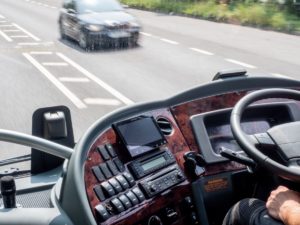
The driver seat is excellent though the Coach Stig felt that it needed just a couple more inches room to slide back. He’s no giant, but had it more or less as far back as it would go. It seemed to us that only the decency screen behind prevented it moving further back, so maybe that could be modified. That said, in terms of the seating position itself, it was excellent.
“The screen is only just beyond the edge of the dashboard; I can reach it,” he said, leaning forward. “It like that. It gives me a better view directly in front of the coach. The dashboard is actually quite high, but it’s close to me so I can see over it easily.”
The Panther Cub is built on Volvo’s B8R platform with its i-Shift automated gearbox. The engine has 350bhp – quite a lot for a coach this size. As we left Plaxton’s coach sales outlet at Anston, and crept up the incline to the traffic lights, the latent torque of the engine was clear. On the open road, acceleration was brisk but never surprising, the gear changes smooth but unhurried and progress was of the sure and steady type.
Plaxton Coach Sales’ General Manager, Simon Wood, says the feedback he has about fuel economy on the B8R is good, and we had no reason to doubt it. At all times, the coach was in its comfort zone, gear ratio wise, and sitting below 1,500rpm on the whole. At 62mph, it had 1,450rpm on the clock. It felt frugal, without feeling feeble. It also has a ‘coast mode’ in which, on steady downhill parts of the test ride, the engine revs dropped to tickover.
The ride felt firm – it usually does with no load aboard – but very comfortable with no unpleasant jolts and, even over very uneven surfaces, only a hint of choppiness. On this model, there was no Volvo Dynamic Steering, which recentres the wheel rather abruptly for some drivers’ taste; the Coach Stig is one of those who’s not its biggest fan. In the saloon, noise was well under control. The only place I managed to hear some transmission whine was near the rear servery, right over the engine.
The first opportunity we had for a close-quarters manoeuvre was to get the coach into a tight spot for the photographs. It made an extreme turn with ease, and repeated this agility back at Anston when we parked it up. The view around the coach via the mirrors is exceptional. Also needed on the day was the sun blind – a single-piece electrical blind with sahde netting to the left, and a solid blind on the right.
The coach performed faultlessly all day, aside from an alarm for the engine bay door which sounded and needed adjustment. This would have been picked up at PDI, but were were on trade plates on the vehicle’s first shake-down since leaving the Scarborough factory.
Verdict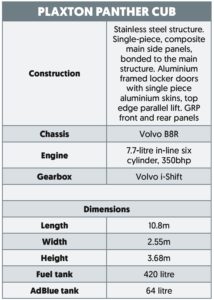
The Panther Cub is a very nice coach indeed. The Coach Stig – who has Plaxton product – said he was a bit tired of hearing that Plaxton coaches ‘are workhorses’: “This product would stand up against anything on the market, I think, and probably at a cost saving,” he said.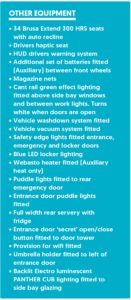
Certainly this example had equipment levels which would make it perfect for VIP and corporate travel: “If I was an operator with a high-quality tour programme, this is exactly what I’d want,” said the test driver. “We all want to fill 50 seats but the truth is, tour programmes rarely do. If I was hitting the 30-plus mark with tours, this would be the perfect coach to transport them.”
The Brusa seats would certainly hit the spot with tour groups, being absurdly luxurious. But more than anything, there’s the ride, and the fact that this little coach will go where 13-metre coaches and tri-axles fear to tread. There’s perhaps a small question mark over luggage capacity but that’s solved by setting a maximum luggage allowance. I don’t know why operators steer clear of this. Everyone who has ever flown is used to it.
At the time of this test, Plaxton had suspended coach manufacture but Simon Wood said that there are three very similar stock vehicles for sale at Anston. Go and take a look. They really are lovely.
